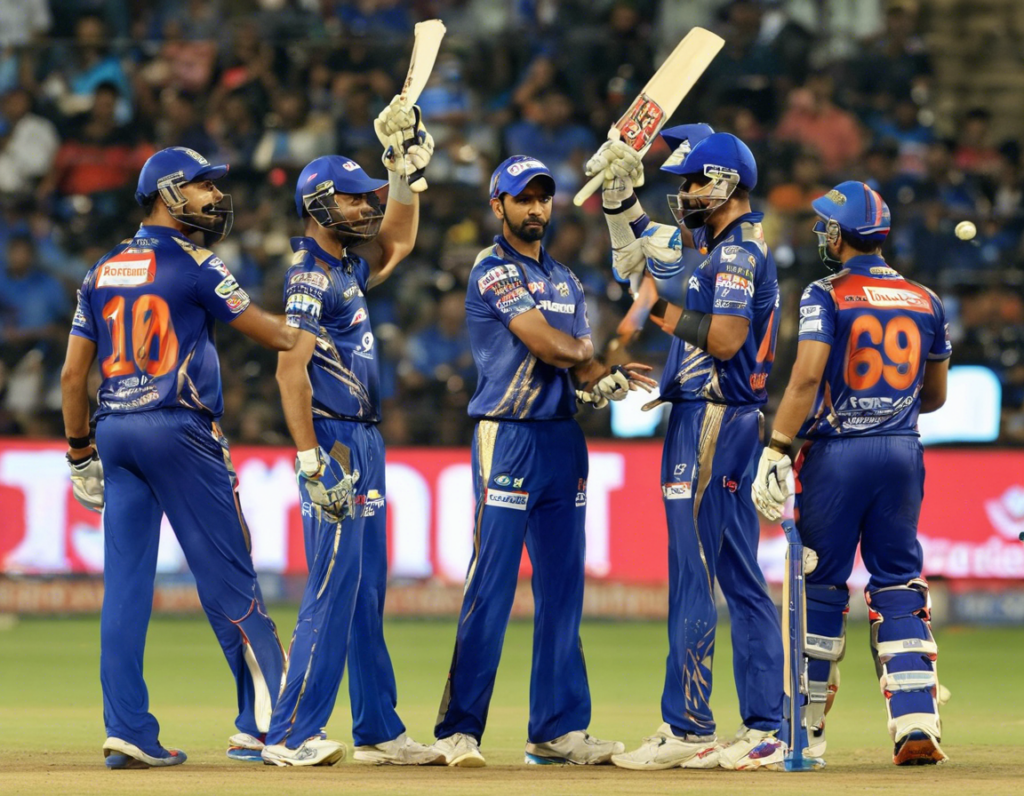Introduction
As cricket fans eagerly anticipate the clash between Gujarat Giants and Mumbai Indians, all eyes are on the scorecard to keep track of live updates and pivotal moments of the match. The scorecard is not just a tool for recording runs and wickets; it is a dynamic reflection of the game’s unfolding drama, showcasing the performances of individual players and the overall progress of the teams. In this comprehensive guide, we delve into the significance of the scorecard, its key components, and how to interpret the numbers and statistics that shape the narrative of a cricket match.
The Importance of a Scorecard
The scorecard is the heartbeat of a cricket match, providing a detailed account of every ball bowled and every run scored. It serves as a historical record of the game, allowing fans, players, and analysts to review and analyze the performance of each player and team. Whether it’s a high-scoring thriller or a low-scoring nail-biter, the scorecard captures the essence of the match in numerical form, enabling fans to relive the highlights and pivotal moments long after the final ball has been bowled.
Key Components of a Scorecard
- Teams: The scorecard lists the two competing teams – in this case, the Gujarat Giants and the Mumbai Indians.
- Players: The names of the players from each team who are batting, bowling, and fielding are included.
- Batting: The batting statistics for each player, including runs scored, balls faced, and strike rate.
- Bowling: The bowling figures for each player, such as overs bowled, wickets taken, runs conceded, and economy rate.
- Extras: Any additional runs conceded through wides, no-balls, or byes are recorded in the extras column.
- Fall of Wickets: The sequence in which batsmen were dismissed, along with the runs scored at the time of their dismissal.
- Partnerships: The partnerships between batting pairs, showcasing the collaboration and synergy between players.
Interpreting the Scorecard
- Batting Performance: Look for players who have scored the most runs, maintained a high strike rate, and built crucial partnerships.
- Bowling Performance: Identify bowlers who have taken wickets, maintained a low economy rate, and applied pressure on the opposition.
- Fall of Wickets: Analyze the timing and impact of key wickets falling, which can shift the momentum of the game.
- Extras: Keep an eye on the extras conceded, as these additional runs can influence the final outcome of the match.
Live Scorecard Updates
In the digital age, accessing live scorecard updates has never been easier. From dedicated sports websites to mobile apps and social media platforms, fans can track the progress of the match in real-time, receiving ball-by-ball commentary, instant score updates, and statistical insights. Whether you’re following the game from the comfort of your home or on the go, staying connected to the scorecard enhances the viewing experience and deepens your engagement with the sport.
Crucial Metrics to Watch For
- Run Rate: The rate at which runs are being scored, indicating the team’s momentum and batting efficiency.
- Required Run Rate: The rate at which the chasing team needs to score to achieve the target, guiding their strategic decision-making.
- Boundary Percentage: The percentage of runs scored through boundaries (four or six), reflecting a team’s aggressiveness and scoring ability.
- Dot Ball Percentage: The frequency of dot balls bowled, showcasing the bowling team’s ability to build pressure and control the game.
Understanding Player Statistics
- Batting Average: The average number of runs scored per dismissal by a batsman, indicating their consistency and impact.
- Bowling Average: The average number of runs conceded per wicket taken by a bowler, reflecting their effectiveness and economic value.
- Strike Rate: The number of runs scored by a batsman per 100 balls faced, measuring their scoring speed and aggression.
- Economy Rate: The average number of runs conceded by a bowler per over bowled, highlighting their ability to restrict runs and build pressure.
FAQs (Frequently Asked Questions)
- How often is the scorecard updated during a cricket match?
-
The scorecard is typically updated after every ball bowled, providing real-time statistics on player performances.
-
Can fans access the scorecard after the match has ended?
-
Yes, the final scorecard with detailed statistics is available post-match for fans to review and analyze.
-
What do symbols like ‘c’ and ‘b’ stand for in the scorecard?
-
‘C’ stands for caught, indicating how a batsman was dismissed, while ‘b’ stands for bowled.
-
Are scorecards available for both international and domestic cricket matches?
-
Yes, scorecards are compiled for all levels of cricket matches, from international fixtures to local tournaments.
-
How do teams use the scorecard to strategize during a match?
- Teams analyze the scorecard to identify opponents’ strengths and weaknesses, adjust their gameplay, and make informed tactical decisions.
In conclusion, the scorecard is more than just a collection of numbers; it is a narrative that unfolds ball by ball, revealing the triumphs, challenges, and moments of brilliance that define a cricket match. By understanding the key components, interpreting the statistics, and staying updated with live updates, fans can deepen their appreciation for the game and the players who bring it to life on the field. So, as Gujarat Giants take on Mumbai Indians, let the scorecard be your guide to the drama and excitement of cricket at its finest.
